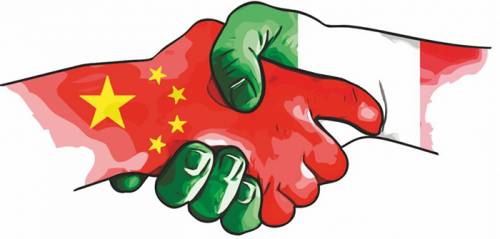
BELT AND ROAD INITIATIVE
- Friday 29 March 2019
- Contratti, International Trading and Financing, Internazionalizzazione, Investimenti, Relazioni internazionali, Via della Seta
- China, Italia, Unione Europea
29 AGREEMENTS FOLLOW AFTER THE MEMORANDUM OF UNDERSTANDING BETWEEN ITALY AND CHINA
On March 23rd the Memorandum of Understanding between Italy and China, better known as BRI agreement, was signed in the declared aim stated of enhancing and strengthening the commercial and political Sino-Italian cooperation.
This agreement constitutes the first part of a greater project, which is expressly recalled, the OBOR project (One Belt, One Road): the opening of a commercial route destined to involve markets for than 65% of the World population, in 68 countries, who themselves produce more than 30% of the World’s aggregate GDP and detain 75% of the energy reserves we know about.
The making of the project passes through the approval of all close European States. Therefore, People’s Republic of China has also already concluded agreements with some of them. Apart from the 16+1 Initiative agreement, in which 11 European countries participate, at the moment there are no other multilateral treaties. Last July, it was released a joint declaration with Germany, which is not binding, but anyway reveals a common ground on number of subjects, such as free trade, particular foreign policy affairs, international peace and security, rule of law, open tenders, research and development. France, instead, concluded 15 trade agreements.
The master-agreement
The memorandum, which is not binding per se, but has the nature of diplomatic document, constitutes the framework to 29 agreements and contracts among which 19 bind institutions or ministries and 10 entail private commercial partnerships.
After recalling the previous dialogue especially between Europe and China, the memorandum identifies objectives, essentially attributable to a broader and closer cooperation, an increase in regional connectivity, sustainable development, convergence of investments expected in the Strategic plan for trans-European networks and those required for the realization of the BRI.
In this view, contracting countries design a model of cooperation per areas, as it follows: a political commitment to realize the project, the development of sustainable transport, simplification of custom practices, removal of obstacles to free trade and digital enhancement, preference of open tender, respect of intellectual property, rejection of protectionism.
A significant attention is paid to environment and sustainable development and growth. It was also expressly explained that the project should come into existence through public and private joint investment and participation.
Following agreements
Afterwards, States have concluded a series of agreements between institutions, signed by the respective Government representatives. Among these, the one for the realization of the economical BRI and the Maritime route do really stand out for importance. Moreover, there are also agreements on Italian exportation of citrus fruits, frozen beef and pork, defining procedures, controls, health standards, custom practices, quarantine, accompanied by a treaty on the elimination of double taxation and efforts to fight tax evasion.
Contracting States also signed agreements focusing on scientific and medical research, start-up promotion and cooperation on space exploration with participation in the Chinese “China Seismo-Electromagnetic Satellite 02” (Cses-02) mission.
A relevant part of these agreements revolved around both promotion and fruition of sites inscribed in the UNESCO list of each of the two Countries, with a Wine-Rise Twinning, a twinning between the city of Verona and the city of Hangzhou, but also attempts to eradicate the illegal traffic of artefacts, defence and safeguard of the cultural heritage, return to the Chinese people of 796 relics.
Furthermore, media and television cooperation agreement between Italian RAI and China Media Group, Italian Ansa and Chinese Xinhua and institution of a political dialogue platform through bilateral meetings were concluded.
These institutional agreements came together with 10 private ones involving: a strategic partnership between CDP and Bank of China, and this latter and ENI; gas turbine technological research and supply and a memorandum of understanding between SNAM, CDP, Silk Road Fund.
Finally, also the harbour authorities of Trieste and Genova came to an agreement with China Communications Construction Group and a further contract was signed between private investors for the realization of a steel plant in Azerbaijan.
Relationship with EU
With the Memorandum of Understanding, the Italian Government recalls the duty to respect of EU law, which ought to be respected even in agreements or treaties concluded with non-EU partners. Equally recalled in the documents are also all decisions taken by the EU-China conference, such as the Strategic plan for regional connectivity.
Even though single Member States were left free to decide whether and how to negotiate the deals, the EU has delivered a joint statement from the Commission and the High Representative which lists ten concrete actions to be taken on a supranational level. The aforementioned statement, delivered on March 12th, 2019, constitutes the agenda on foreign policy concerning Eu-China relationship entailing human rights standards, climate change, termination on national protectionism policies, opening to cooperation in matter of peace and security, but also commitment to undertake provisions against the distortion of market competition and attention to home security, communication and strategic assets control.







